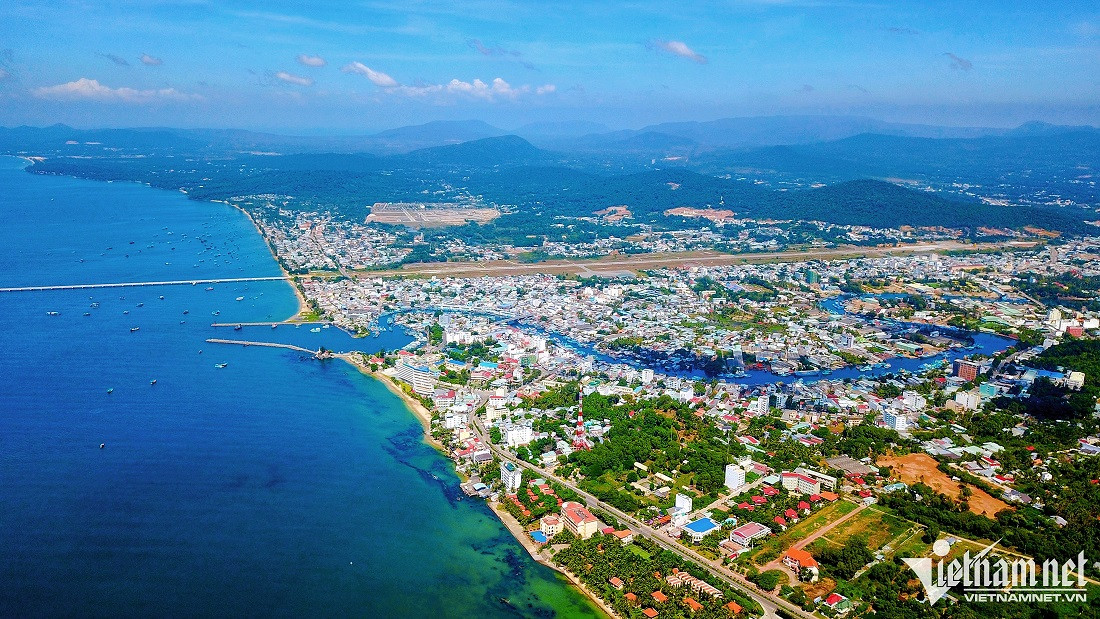
Experts point out that it would be risky for any urban area to develop only tourism. The Covid-19 pandemic has shown this. Da Nang, for example, which focused on developing tourism, has suffered because of the pandemic.
The 2021-2025 socio-economic development plan in Kien Giang province says that Phu Quoc will be developed into a first-class urban area by 2025 and become a national and international sea island tourism city.
As the first island city in Vietnam, Phu Quoc is expected to have a population of 550,000 by 2030. With a population increasing by three times, the island in the future is expected to become a new economic and financial center in the region and the world.
With economic development, and urbanization and population increases expected to go beyond predictions, Phu Quoc is facing a lot of challenges.
Associate Prof Dr Nguyen Chu Hoi warned that Phu Quoc is a ‘pearl’, but if it cannot be developed well, it won’t be able to promote its original value. Water drainage is a matter of concern in Phu Quoc and the ‘pearl island’ must not be turned into a ‘flood island’.
“It is necessary to set principles for Phu Quoc development planning. Phu Quoc should not build houses and resorts without a plan. It needs to pay attention to preserving old elements and build new works on the right track,” Hoi said.
Architect Hoang Manh Nguyen, director of the Vietnam Institute for Green Urban Research and Development (VIGURD), said that Phu Quoc has the same area as Singapore, but resources are limited, especially land. How to exploit land effectively is a problem that needs thorough consideration; otherwise, Kien Giang would lose the capability of exploiting and developing Phu Quoc in the future.
Architect Tran Minh Tung from the Hanoi University of Civil Engineering is gradually losing specific features and becoming similar to other tourism centers.
Tung said if an urban area only develops tourism, it would be fragile. Da Nang, for example, is a purely touristic city and has suffered from the pandemic.
In Vietnam, the development of tourism cities is not associated with the development of hospitals, clinics and healthcare centers. Meanwhile, healthcare facilities play a very important role in the context of the pandemic, and the demand for healthcare is increasingly high.
Vietnam is following the international trend in developing shopping centers. However, he believes there should be shopping areas for average-income people in society. If crisis takes place in urban areas, the centers will satisfy the majority of people. There should also be green parks and flower gardens to satisfy people’s demand.
Tung said the development model for Phu Quoc should not be just a tourism attraction point, but a complete urban area with living activities and economic development.
What is the future of Phu Quoc?
Prof Dang Hung Vo, a respected land expert, suggested that Phu Quoc should develop into a city using 100 percent of renewable energy to generate electricity. Electricity will come from sea winds, tides and sea waves. In terms of transport, only electricity-run engine vehicles would be used. All housing and tourism real estate products must meet the standards of green urban areas.
It is necessary to encourage people to develop green construction works and environment, thus turning Phu Quoc.
Vo said if it follows that way, it would increase the added value of tourism, and then consider the next steps to develop modern urban areas. This would be the original feature of Phu Quoc City attracting foreign travelers.
Phu Quoc needs special policies to develop, with regional and international integration serving as the basis. It needs to be given the right to apply specific policies on land development and capital seeking.
Dinh Trong Thinh, an economist, said there should be development stability for 40-50 years. Urban areas and investment in real estate need to be in line with the long-term development of the smart and hi-tech city.
Duy Anh